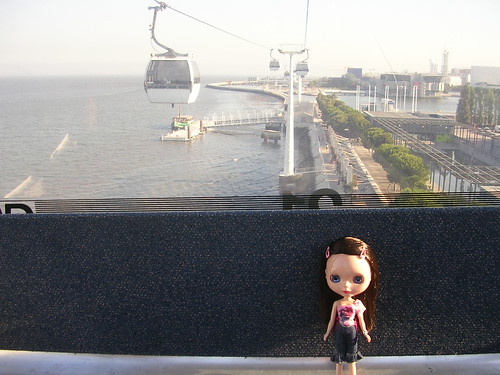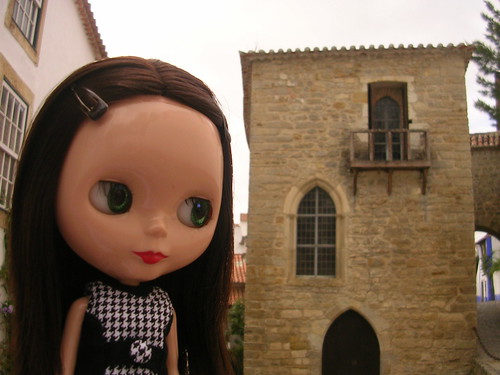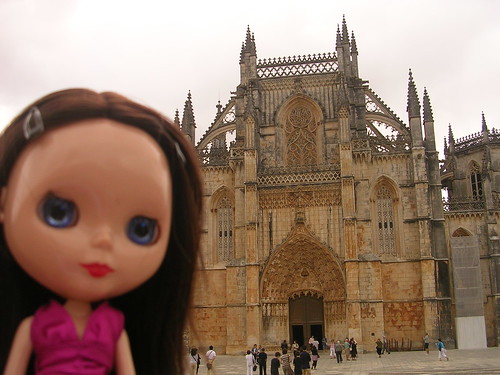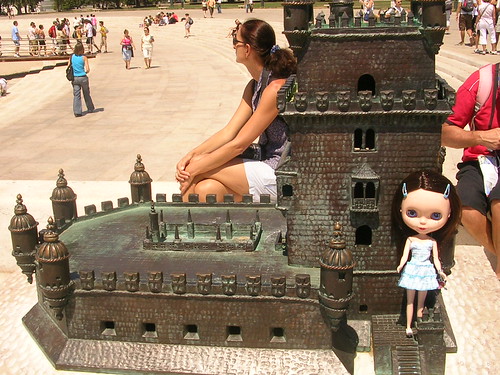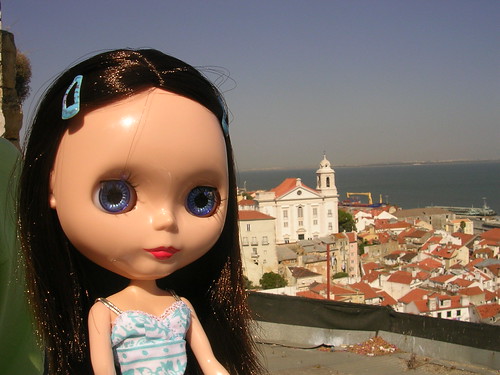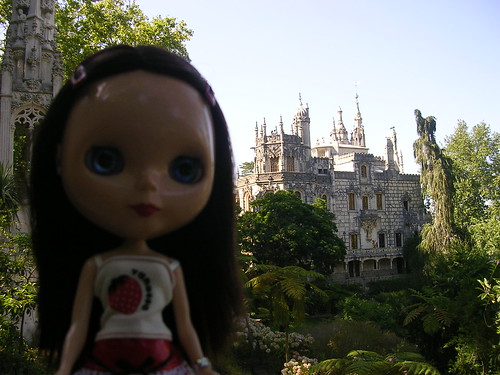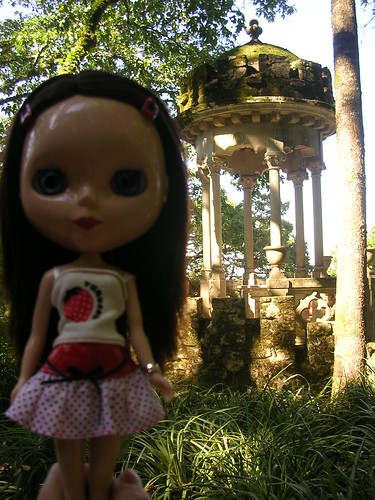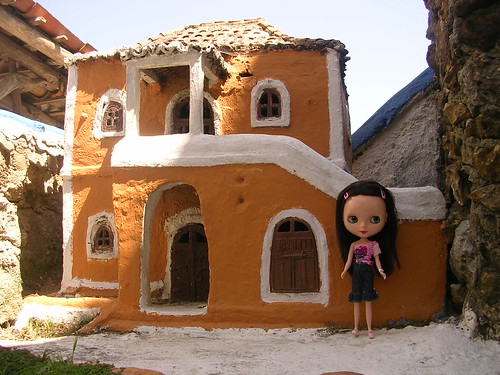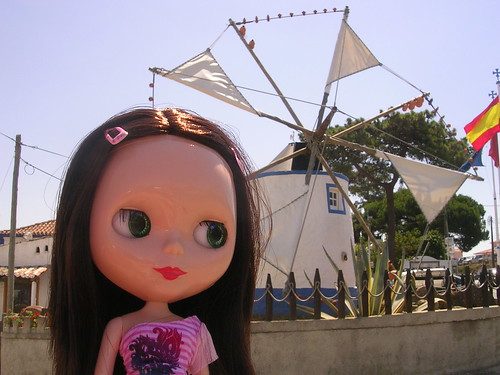It was very hot, and so then we went to the beach of Ericeira. I did not take a bath because there were quite high waves, and water was cold (at least it's what mum said).
O sea que me dediqué a posar como una modelo :)
So what I did was posing like a top model :)
Volviendo de nuestra excursión a Mafra, Sobreiro y Ericeira, nos quedó tiempo libre. Aprovechamos para ir a ver lo más nuevo de Lisboa: los terrenos donde se celebró la Expo del 98, donde han hecho un centro comercial y jardines para pasear. Fuimos allí en teleférico. ¡Fue tan emocionante montar en el teleférico!
We had some free time after our daytrip to Mafra, Sobreiro and Ericeira. So we went to see the newest part of Lisbon: the places where the Expo 98 took place. Now they have built a shopping mall there, and also nice gardens. A cable car brought us there. It was so terrific to travel by cable car!
Óbidos es un pueblecito pintoresco con casitas blancas y edificios antiguos, rodeado por una muralla que se empezó a construir en tiempos de la Reconquista.
Óbidos is a small village full of local colour, with white houses and ancient buildings, surrounded by walls that were built during the Reconquest.
El castillo es genial, parece de Exin Castillos :D. Ahora es una "Pousada" (el equivalente portugués a nuestros paradores nacionales)
The castle is amazing, it looks like the castles you can build with Exin Castillos (a Spanish block construction game to build castles). Now it's a "Pousada" (a sort of historic hotel).
Alcobaça es un monasterio que empezaron a construir los monjes Cistercienses en el siglo XII. Mami dice que le recuerda a Santes Creus.
Alcobaça is a monastery that the Cister monks began to build in the 12th century. Mom says that it reminds her of Santes Creus (a monastery in Catalonia).
Esta es la fachada de la iglesia del monasterio de Alcobaça. Había mucha gente, aparte de los giris como nosotros, haciendo fotos en plan japo, había una boda de unos franceses (ya me dirás quién les mandaría casarse en Portugal)...
This is the façade of the church of Alcobaça monastery. It was crowded. Apart from lots of foreigners like us taking pictures like Japanese, there was a wedding of a french couple there (funny that they had decided to marry in Portugal).
También visitamos el pueblo de Nazaré, antes típico pueblo de pescadores, y ahora lleno de turistas por las playitas y por el pescado, que tiene fama de ser muy bueno. Mami y yo decimos: "Pescado, puaj puaj puajjjjj"
We also visited the village of Nazaré. Formerly it was a typical fishermen village and now it's full of tourists who go there for the beautiful beaches and for the fish, which has a good reputation for being very good. Mum and I, we say: "Fish, yuck yuck yuckkkkk"
Al día siguiente visitamos el monasterio de Batalha. Es precioso! Realmente se llama "Santa Maria Da Vitória" y lo mandó construir el rey Joao I para conmemorar la victoria portuguesa en una batalla que les llevó a la independencia de España. Menos mal que no son rencorosos, porque el 85% mínimo de los visitantes son españoles...
The day after we visited Batalha monastery. It's really wonderful! Its real name is Santa Maria Da Vitória and the king Joao I made built it in order to commemorate the Portuguese victory in a battle that led them to their independence from Spain. Luckily they are not resentful, because minimum 85% of the visitors are Spaniards.
Esta es una vista de los preciosos arcos góticos del claustro. Este estilo se llama "Manuelino" gotico tardío portugués) y es muy recargado.
This is a view of the beautiful gothic archs of the cloister, This style is called "Manueline" (late Portuguese gothic) and is very overelaborated.
Después fuimos a Fátima, pero no me entusiasmó demasiado tener que ir allí. Estaba todo lleno de gente y de tiendas que vendían objetos religiosos la mayoría "made in China"...
Then we went to Fátima, but I didn't like that much the idea of going there. It was crowded everywhere and it was full of shops selling religious objects, most of them "made in China"...
Antes de marcharnos de Portugal, volvimos a ir a Belem, y yo encontré esta Torre de Belem tamaño Blythe, una réplica en metal, que está delante de la de verdad ¿a que es mucho más adecuada para mí? ¡Yo la quiero! ¡Ojalá me la hubiera podido llevar a casa!
Before leaving Portugal, we went again to Belem, and I found this Belem Tower Blythe size, a metal replica that is situated in front of the real one. Isn't it more suitable for me? I want it! I wish I could have taken it back home with me!


